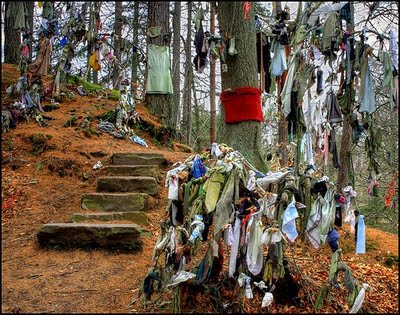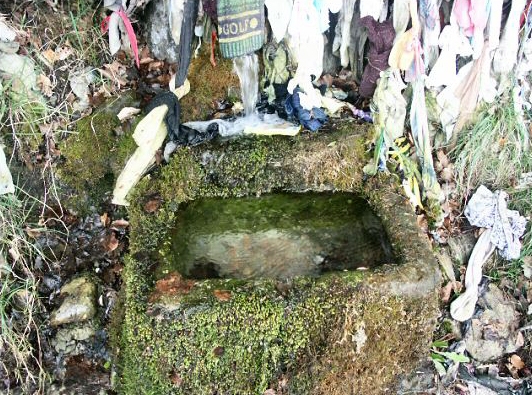
The Clootie Well, near the village of Munlochy in the heart of The Black Isle. This is sort of an evolution of the tradition of holy wells to which pilgrims would come and make offerings. People would come here because of illness to get healed. The tradition dates far back into pre-Christian times, to the practice of leaving offerings to the local spirits or gods in wells and springs. With the arrival of Christianity, the practice was simply adopted to the new circumstances.
The holy well at Munlochy is said to date back to the time of St Boniface or Curitan, who worked as a missionary in Scotland in about AD620. Pilgrims would come, perform a ceremony that involved circling the well sunwise three times before splashing some of its water on the ground and making a prayer. They would then tie a piece of cloth or “cloot” that had been in contact with the ill person to a nearby tree.
As the cloot rotted away, the illness would depart the sick person. An alternative tradition suggests that sick children would be left here overnight to be healed. Presumably any with the strength or spirit to survive what would have been an exceedingly creepy ordeal were pretty likely to recover anyway.
Many people still obviously believe that leaving an offering will be of benefit to them or to others. One problem is that many choose to leave items made of modern synthetic materials that will never rot away. This does little for the local environment: and neither, according to the tradition of the well, can it do anything for the health of the individual needing to be cured.
In truth, today’s Clootie Well has become a sort of all-purpose focus for a range of alternative views of the world. Just please leave items that will rot away.

